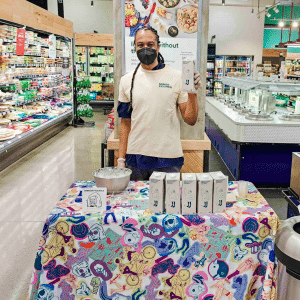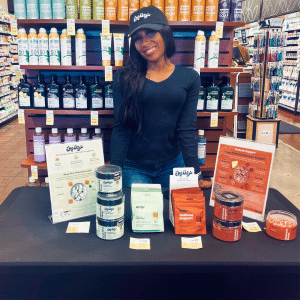
In this blog post, we’re sharing some valuable tips to help your brand make a memorable impression and maximize the impact of your retail demos.
1. Define Your Goals
Before diving into retail demos, it’s essential to define your goals. What do you hope to achieve from these demos? Are you looking to increase brand awareness, gather customer feedback, or drive immediate sales? Defining your objectives will help you tailor your approach and measure the success of your efforts accurately.
2. Choose the Right Retailers
Not every store will perform equally. Selecting the right retailers to partner with is crucial for the success of your product sampling demos. Consider factors like foot traffic, customer demographics, and the retailer’s reputation. By choosing the right retailers, you increase your chances of reaching your target customers and building a solid customer base. For more on store selection, check out this blog.
3. Plan Your Demo Set-up
Remember that retail demos fall under the experiential marketing category. You want to think of this product sampling as an experience. What makes the consumer want to stop at your table? What makes them connect with your brand? A clean, eye-catching display and clear branding will help make your table more inviting.
4. Spend Time Finding the Right Demo Reps
Your demo team is the face of your brand during retail demos, so it’s crucial you choose these reps wisely. The person you’re looking for fits in organically with your team. They are passionate, goal-oriented, and align with your company’s values. Also, ask candidates about practical things – like if their schedule is open on the days that are busiest for your retailers and if they are able to transport the demo supplies to the stores for their shifts.
5. Train Your Demo Team
Even if your demo rep is passionate and well-spoken, they cannot succeed without training. Ensure they have a thorough understanding of your product, its unique selling points, and the brand story. Give them enough information to be able to answer the most commonly asked questions with confidence.
6. Include a Call to Action When Possible
Consider offering special promotions or discounts during the demo to incentivize immediate purchase. Temporary price reductions (TPRs) are a great alternative if you don’t have demo-specific coupons or promotions. The idea here is to give your brand ambassadors a call to action to help them close the sale.
7. Learn and Grow
Make it a point to consistently gather feedback from your team, customers, and retailers. Take note of what worked well and areas that need improvement. Adjust your approach, messaging, and demo setup accordingly to optimize future demos. Continuous evaluation and iteration will help you improve your strategy and increase the effectiveness of your retail demos over time.

Launching your retail demo program can be an exciting and rewarding experience for your brand. By following these tips, you can ensure that your demos make a lasting impact, attract potential customers, and drive sales. Happy sampling!




